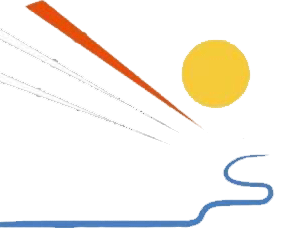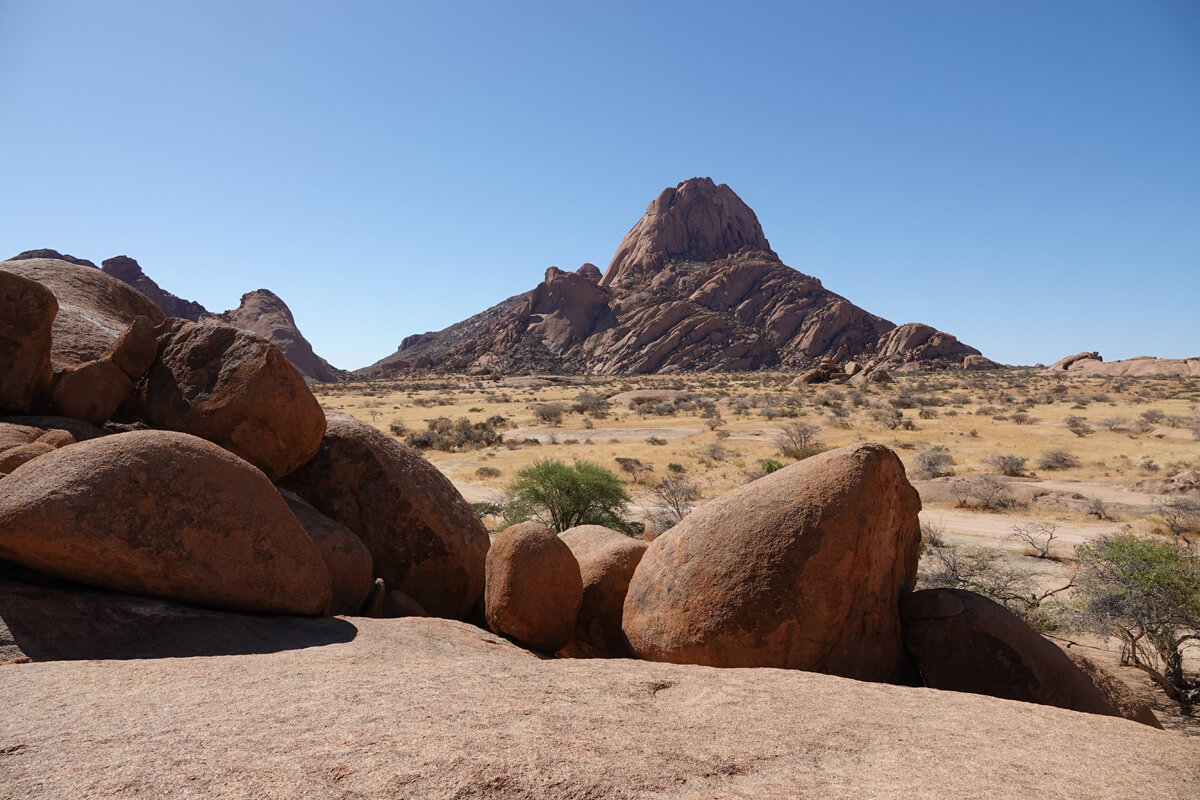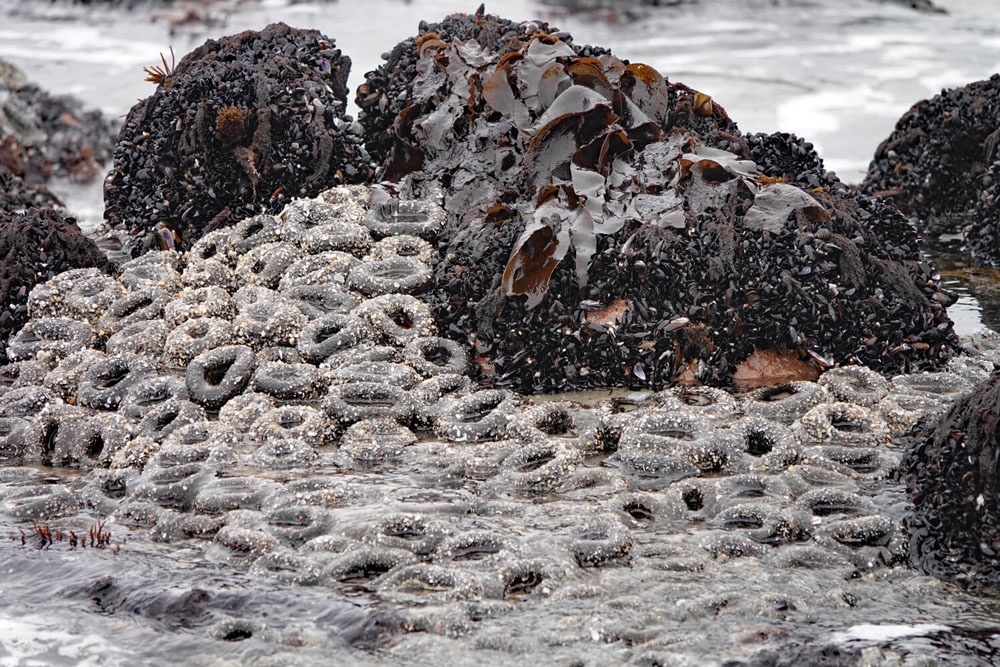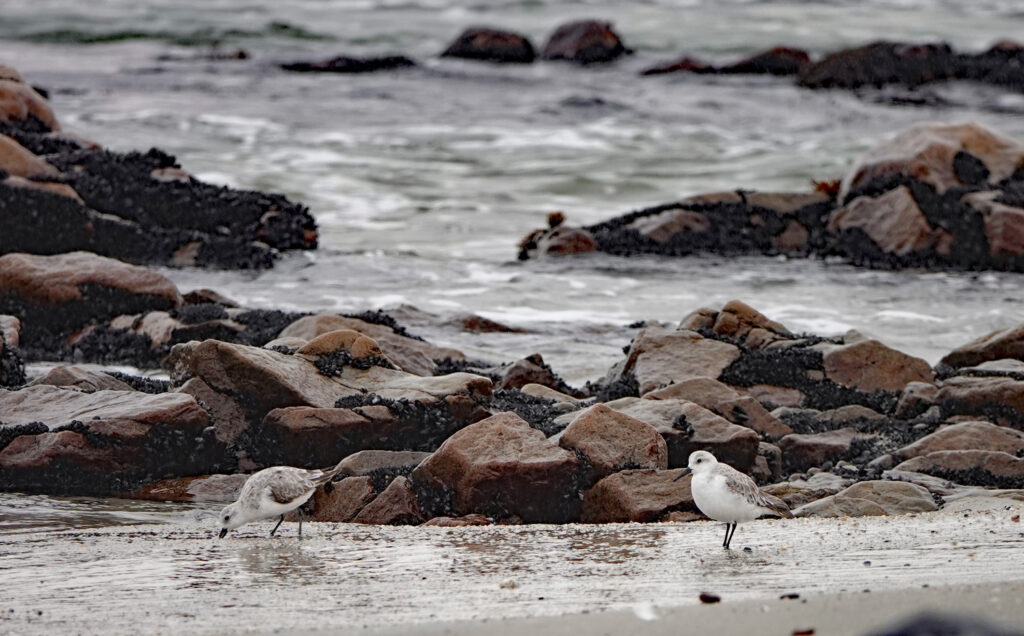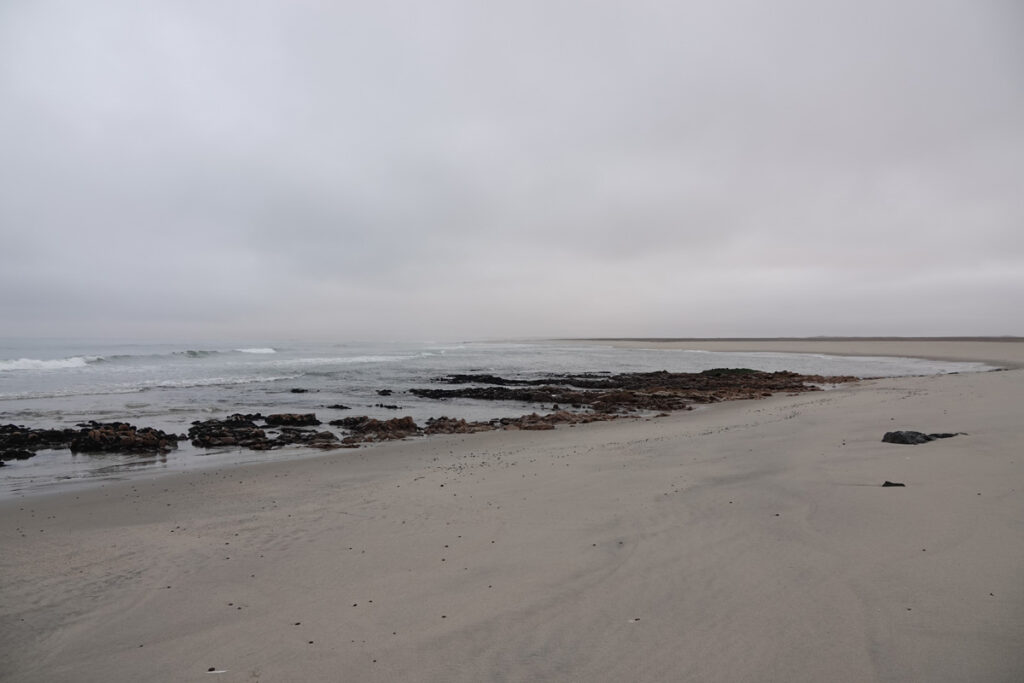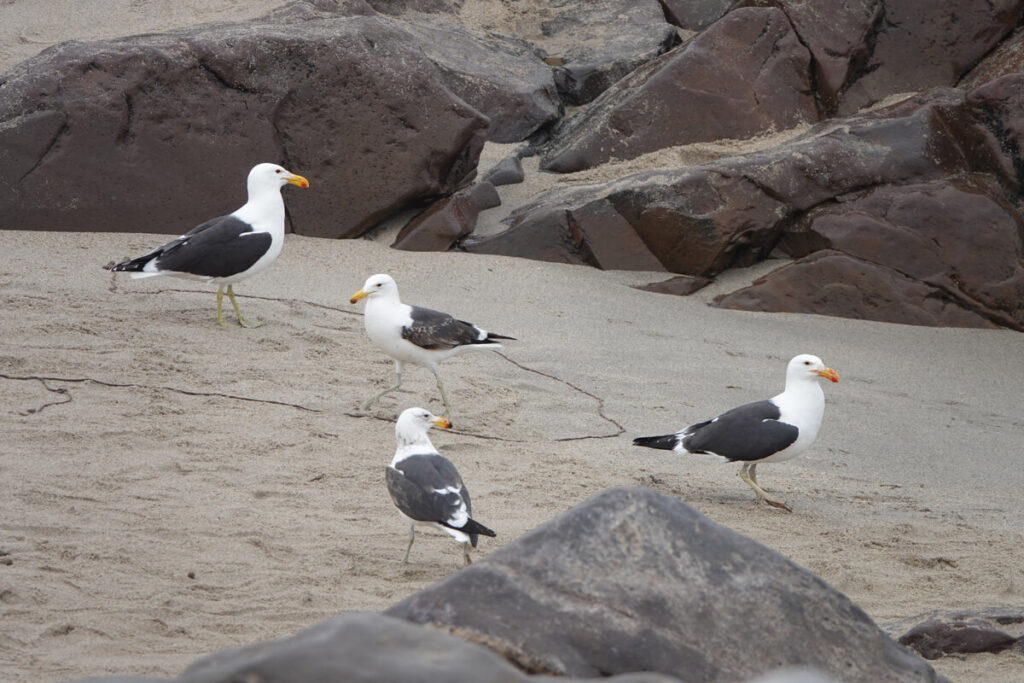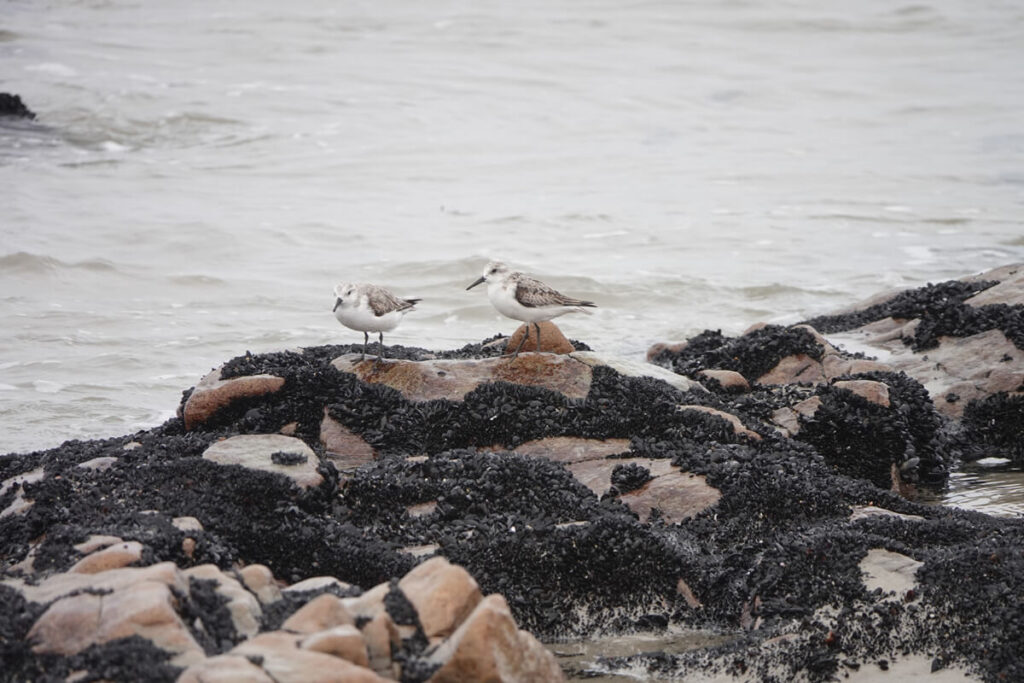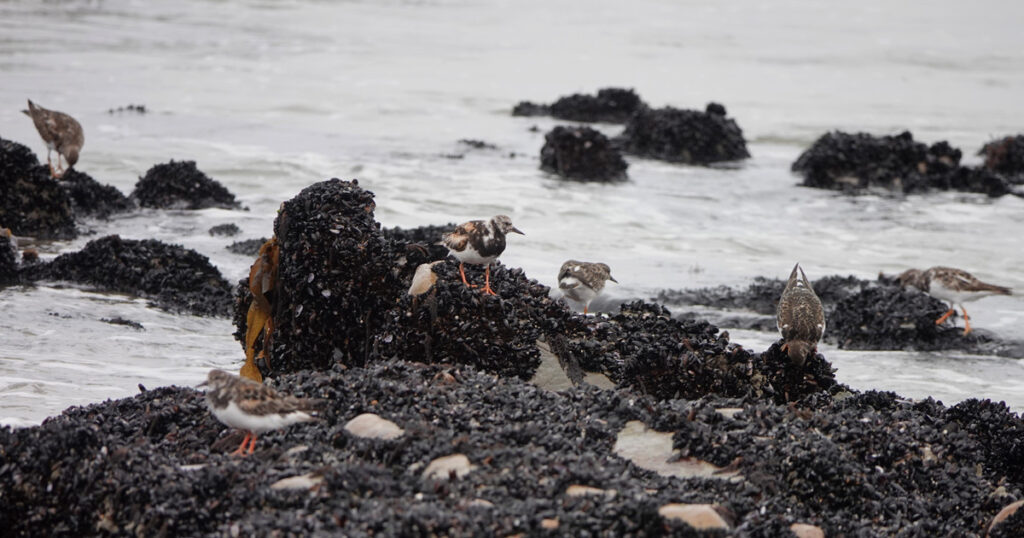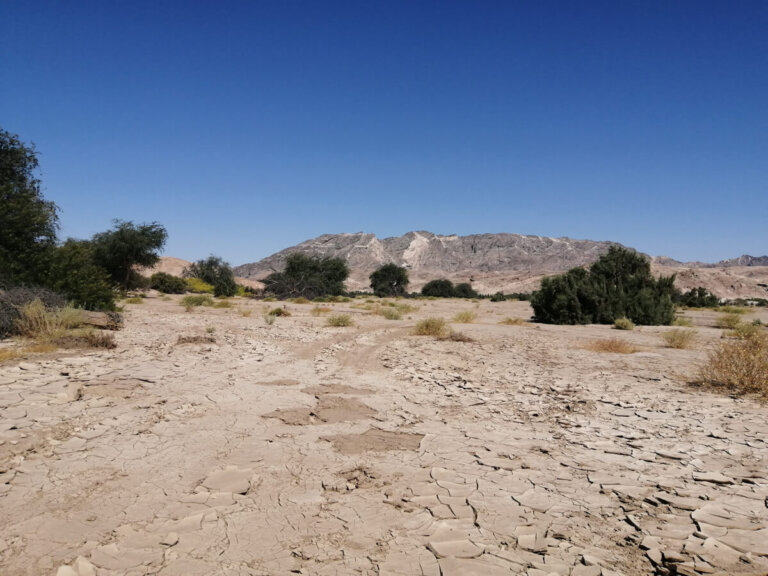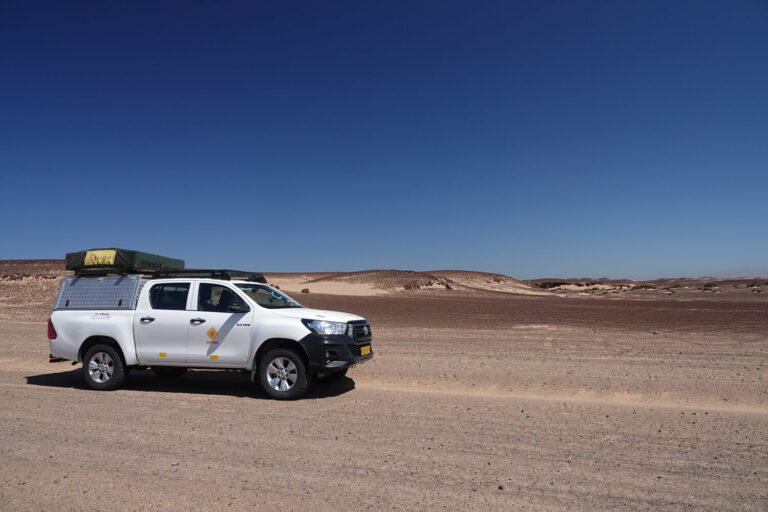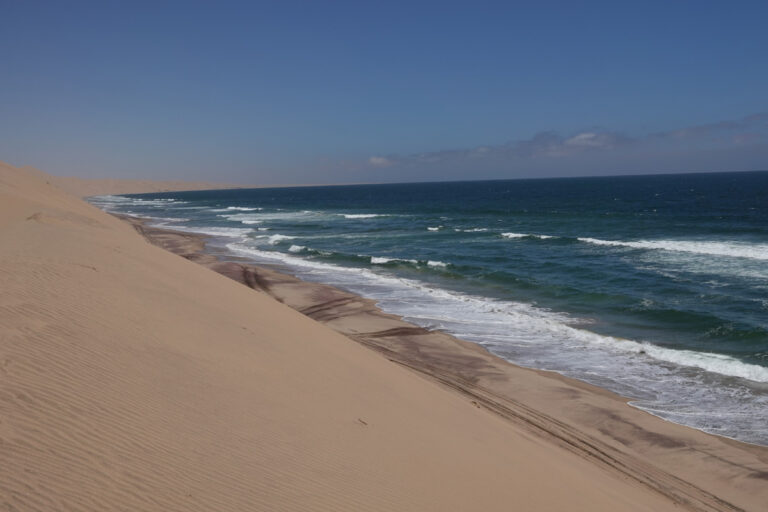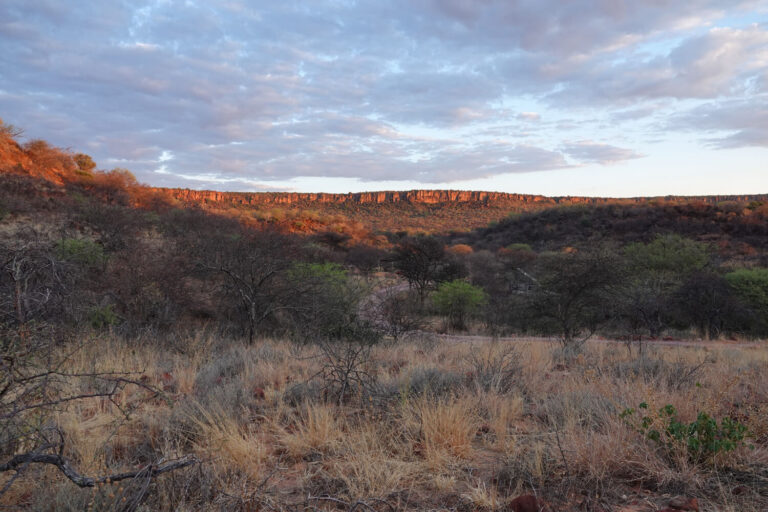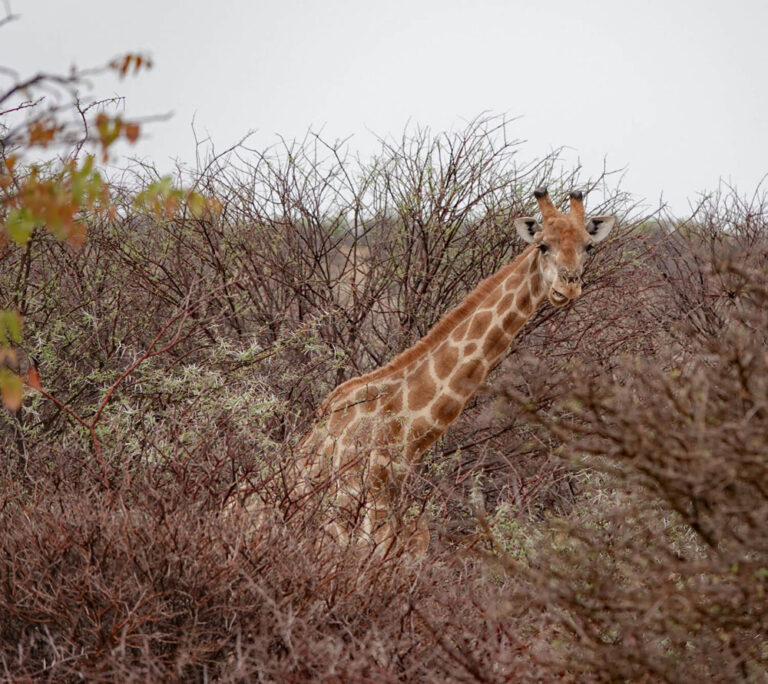Day 6 : Cape Cross and the Spitzkoppe
Cape Cross
The sky is completely overcast, but the wind has died down. Since we were still hungry last night, we head back to the lodge for breakfast.
The Cape Cross reserve opens its doors at 10 a.m., giving us plenty of time for a stroll along the beach. The ebbing tide reveals the rocks overrun with mussels, oysters and other molluscs, to the delight of the feasting birds. Seagulls, sandpipers, tounepierres… are busy choosing their pittance. A little further on, a young fur seal, mortally wounded, has washed up on the beach, and out to sea, another is stirring on all sides; it’s probably its mother looking for it.
In front of the makeshift padlocked gate to the reserve, we wait patiently, as we should in Africa. It’s nearly 10.30 a.m., and the men get out of their cars and try, unsuccessfully, to open the gate. A few moments later, a young man’s head appears at the top of the undulating track. At last, we can enter.
The Cape Cross reserve is the largest in southern Africa. Its 60 km² of rocks and gravel beaches are invaded by some one hundred thousand southern fur seals. This number can exceed two hundred thousand in November and December, during the breeding season.
I’m puzzled by this gigantic, moving crowd. José is delighted and savors the moment. Offshore, a large number of fur seals are busy fishing. They are constantly waving a tail fin, as if to signal to their fellow seals that all is well, but in reality these gesticulations simply support them in the water.
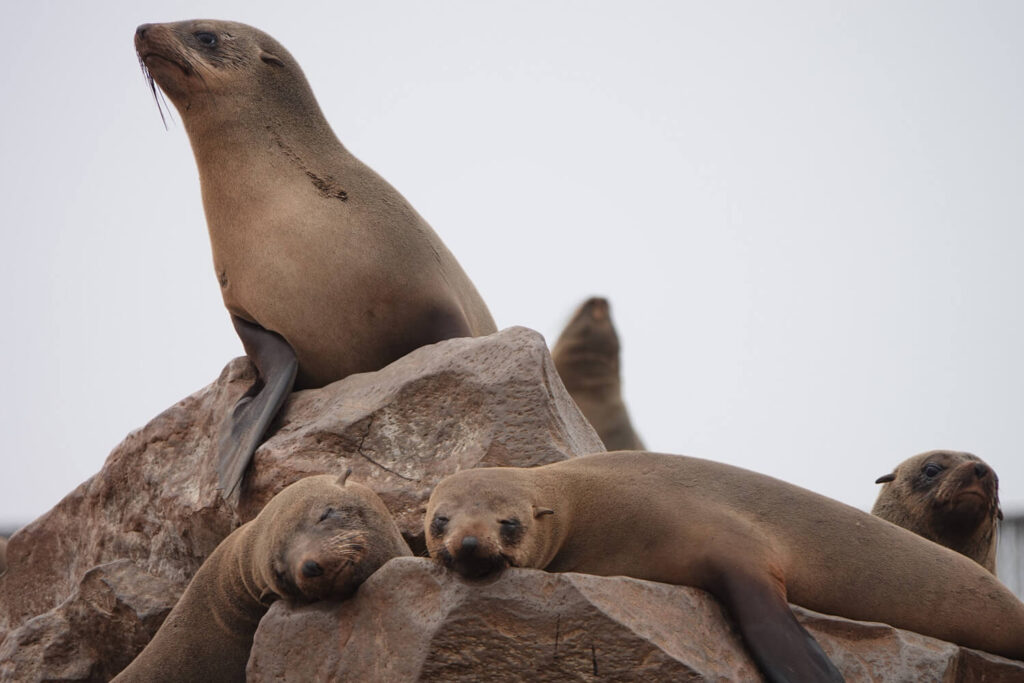
The fur otary belongs to the otariidae family. It has a large head and a pointed snout. Males can weigh up to 350 kg. They have light-colored bellies, while females have darker ones. The otary can be distinguished from the seal by its small, clearly visible external ears.
The seal, which belongs to the Phocidae family, has no auricles. Another major difference is that these two carnivores have different flippers. The otary’s flippers are larger, so it can stand up on its pectoral fins and leap forward. Underwater, they use them like flippers. Seals, on the other hand, are better adapted to aquatic life, and can only crawl along the ground. When they swim, their flippers remain pressed against their bodies.
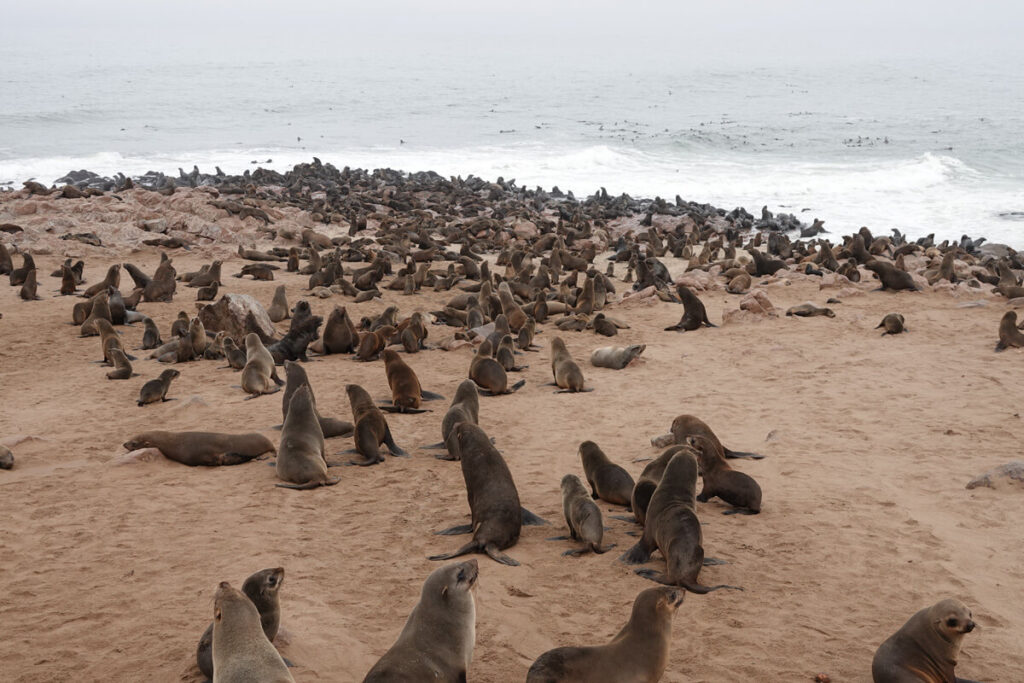
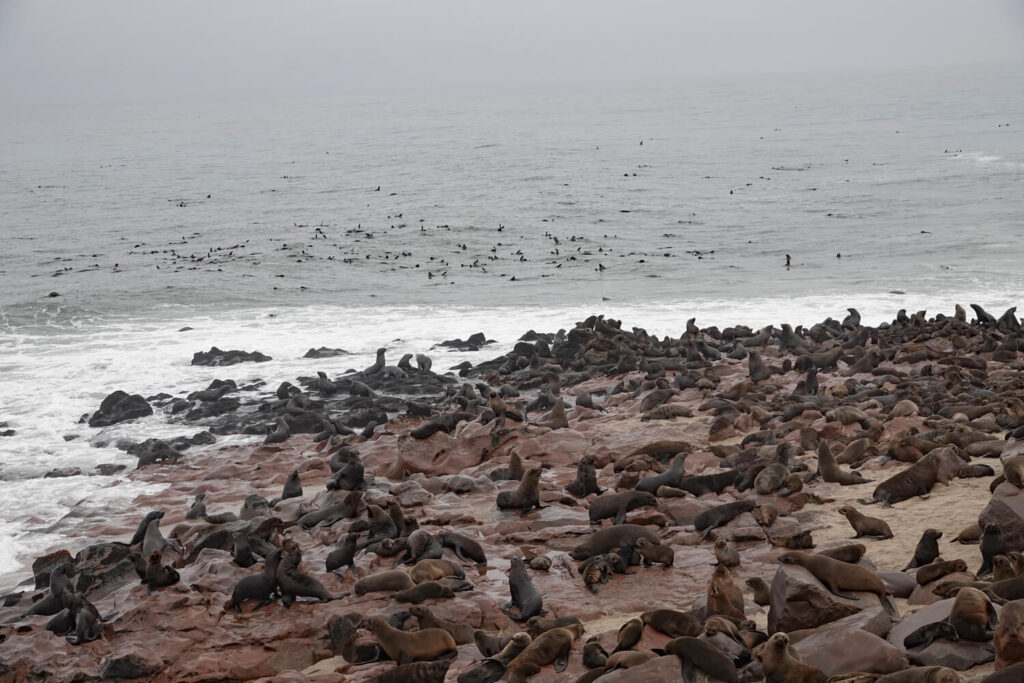
Namibian fur seals feed on crustaceans and cephalopods, which they find in abundance in the waters off the Atlantic coast of southern Africa, thanks to the upwelling phenomenon. But they still attract a variety of scavengers, notably brown hyenas and black-headed jackals. Their main predator is the white shark, which can wreak havoc. In an attempt to limit their losses, sea lions swim in groups or create directional movements to create a sense of panic.
Diego Cao
Cape Cross takes its name from the stone cross Diego Cao planted there in 1486.
Diego Cao discovered this coastal cape in southern Namibia during an expedition in search of the route to India, led on behalf of King Joao II of Portugal. On his ship, he carried the ‘Padrao’, a stone milestone topped with a cross, to mark the territory conquered by the Christian Portuguese Crown.
Under the German protectorate, the cross was shipped to Germany. Two years later, in 1895, Wilhelm II, ruler of the German Empire, had a replica erected in the original location. This cross was again sent to Germany. Currently in the possession of the Berlin Archaeological Museum, the original cross has not been returned. In 1968, the site of the ‘Padrao’ was declared a national monument, and a new replica, made of local dolerite, was erected on the exact site of the stele planted by Diego Cao.
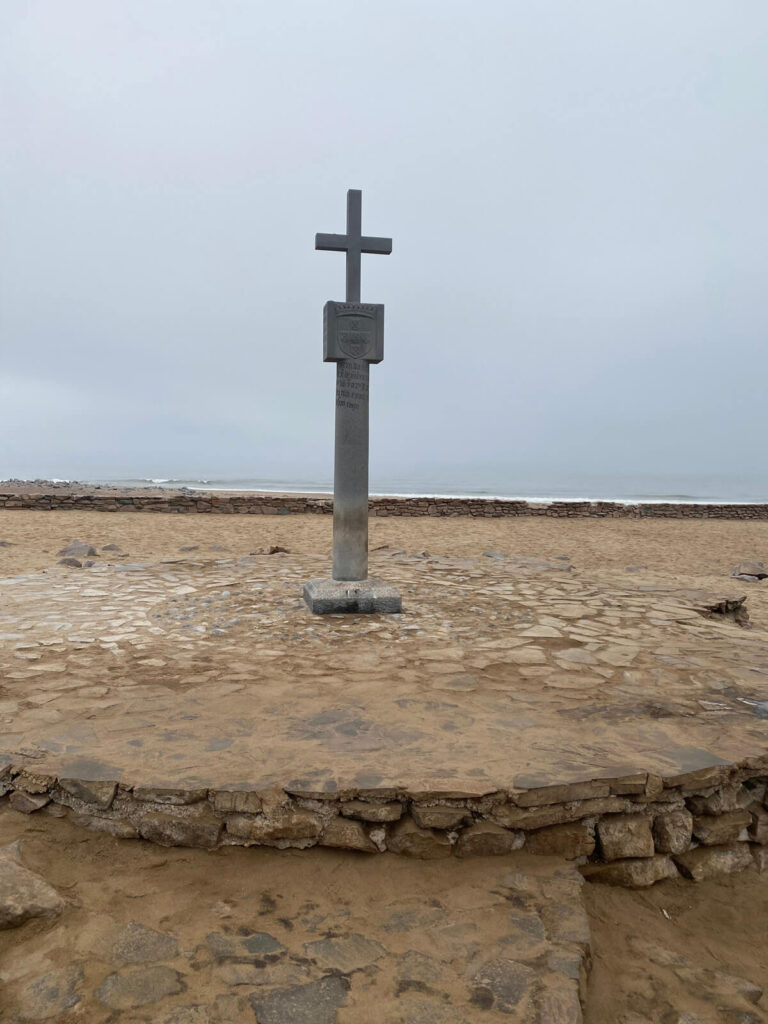
The Spitzkoppe
It only took a few kilometers to find a completely clear sky, as blue and radiant as we’d hoped. We take advantage of our solitude on the long straight gravel road leading up to Mount Spitzkoppe to prepare a good cup of coffee.
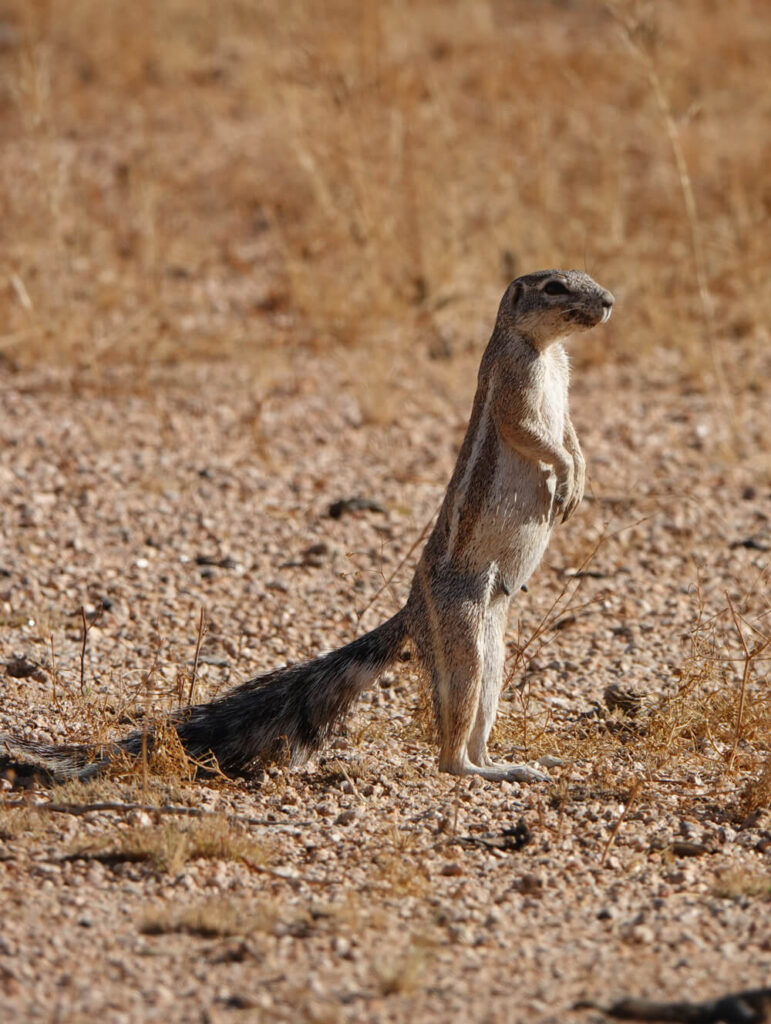
My ambition is to climb to the bottom of the arch. The slope at the foot of the arch is steep and slippery, but I manage it. Unfortunately, I can’t climb into the arch from this side, as the slope is vertical and there are no holds. All I can do is climb back down.
A guide from the community that manages the site takes us on a tour of the Bushmen’s rock paintings. These include an octopus, a rhinoceros and a lion, as well as human figures, a hunting scene and a family scene with children.
6000 years ago, Spitzkoppe was inhabited by the Bushmen (San), Namibia’s first inhabitants. In Bushman Paradise, you can admire the rock paintings they produced between 4000 and 2000 years ago. Other paintings adorn a granite overhang known as Small Buschmen Paradise. Strictly speaking, these paintings are not art, but a means of communication with ceremonial, shamanic, therapeutic or didactic purposes.
“Many examples of Bushman cave paintings (at least 37 have so far been discovered) can be seen in the Spitzkoppe area and they are believed to date back 2000-4000 years. The bulk of them are within Bushman’s Paradise, considered one of the finest collections of rock art in Namibia. This cave has been known to Europeans since the beginning of the 20th century. Unfortunately some of these paintings today are badly damaged due to vandalism. The bushman rock paintings at paradise cave were proclaimed a national monument in July, 1954.”
Source ; Spitzkoppe Cave Paintings
As our tour draws to a close, we’re off to Spitzkoppe Tented, Camp & Campsite.
A young native couple runs the camp. At reception, they graciously offer to put us up in a canvas chalet equipped with every comfort. There’s a rough-looking restaurant, but we’ll have dinner to thank them.
At nightfall, José sits on the terrace of our chalet and is visited by a jackal.
The horizon reddens and, in the bushes, barking lizards, with their very particular song, seem to imitate the sarcastic laughter of theatrical ghosts… it’s like Halloween!
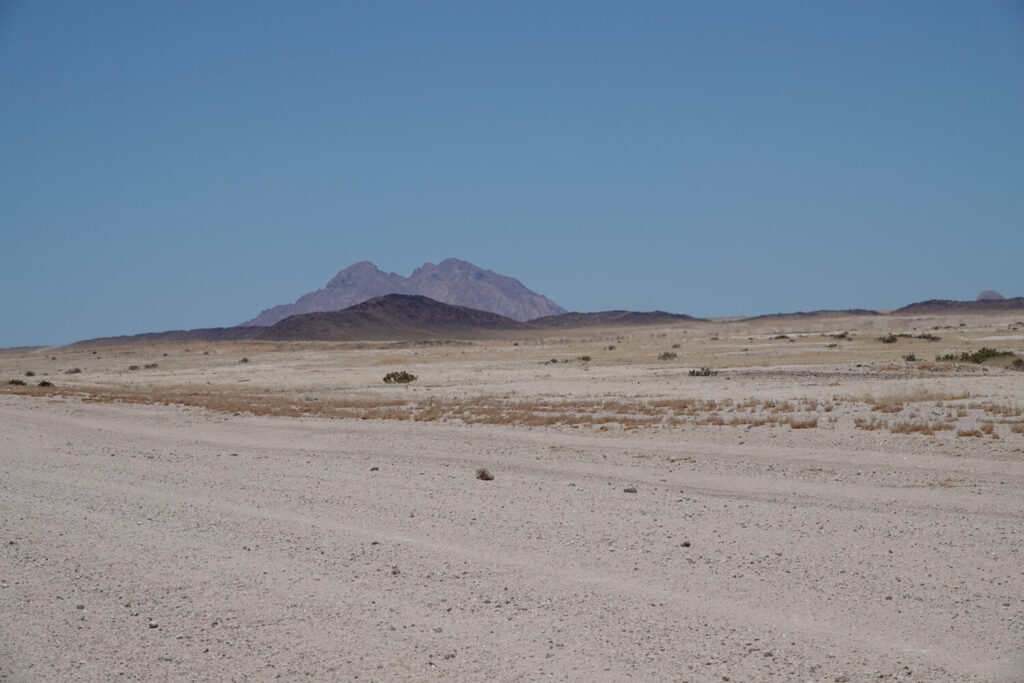
Spitzkoppe is located in the Erongo region, close to the town of Usakos. The Spitzkoppe emerges like a mirage from the long track that crosses an immense flat plain. As the day progresses, its colors change from pink to orange, from purple to red.
Its Afrikaans name, which literally means “pointed hat”, comes from its shape. It is also known as “The Matterhorn of Namibia”. It is an inselberg, formed 140 million years ago. Its summit rises to 1728 m.
This granitic pluton results from the slow crystallization of magma in deep zones of the Earth’s crust, during which the intrusive granites passed through long fissures. The dismantling of the pluton and the shaping of the rocks into arches, basins or sugar loaves are due to overlying erosion.
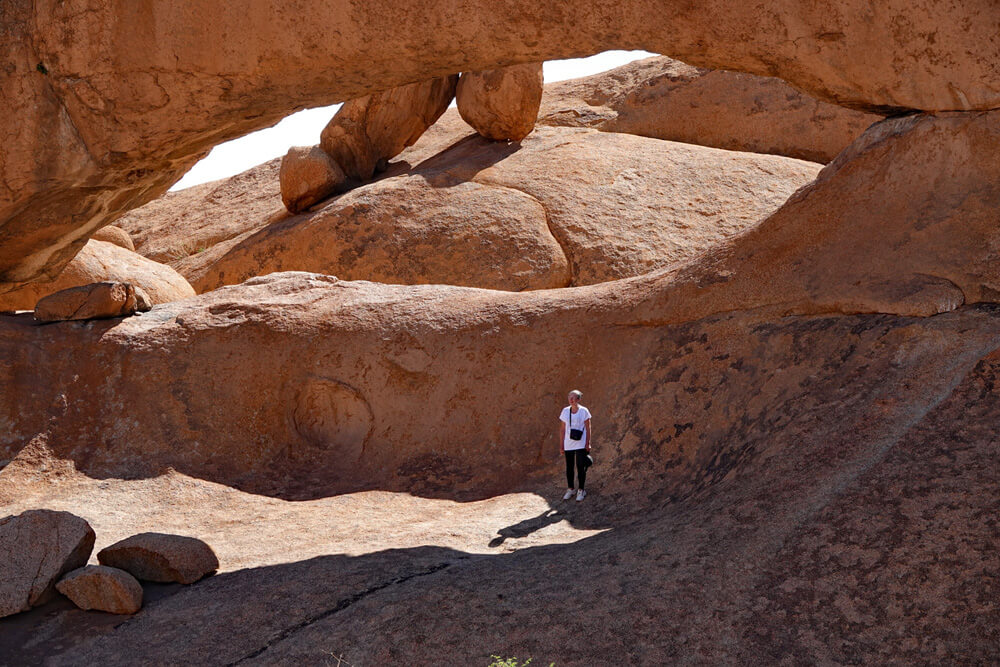
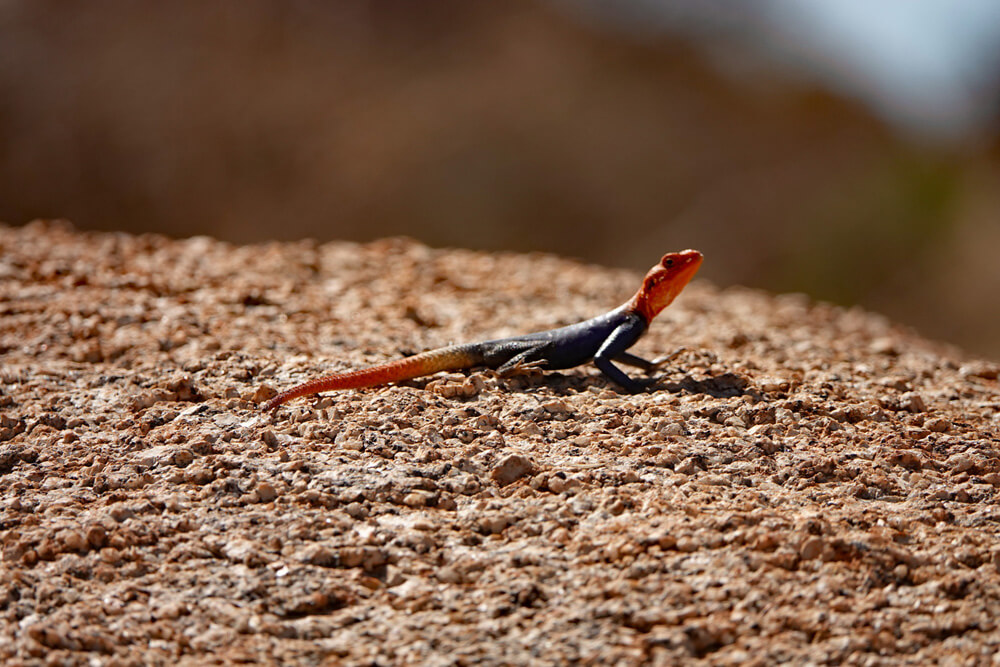
Oiseaux, lézards, écureuils, spingboks, damans des rochers, tout un petit monde qui semble jouer paisiblement dans cet Eden chaleureux.
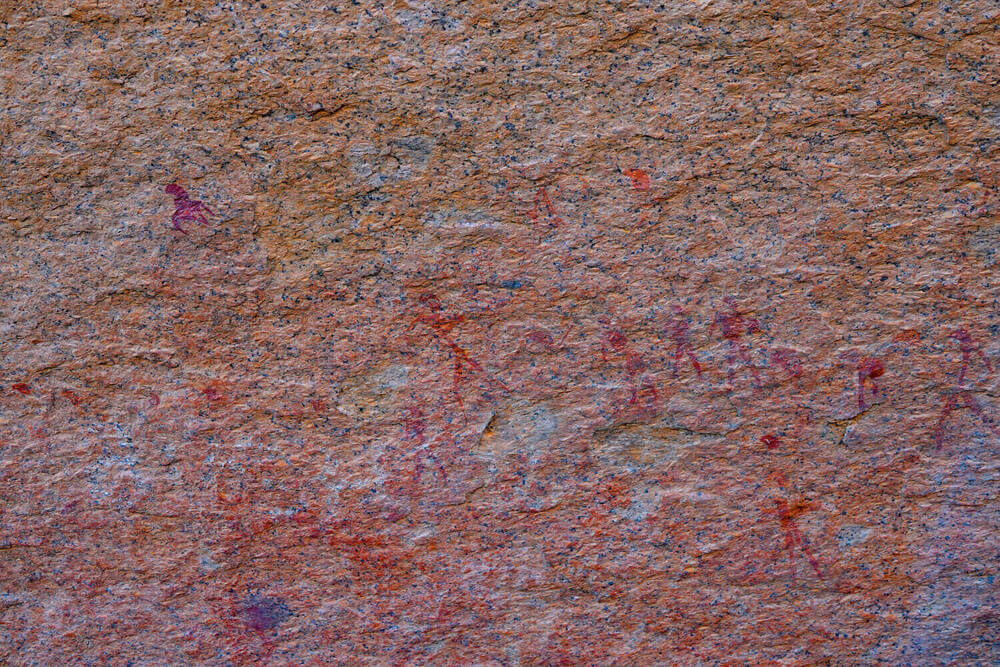
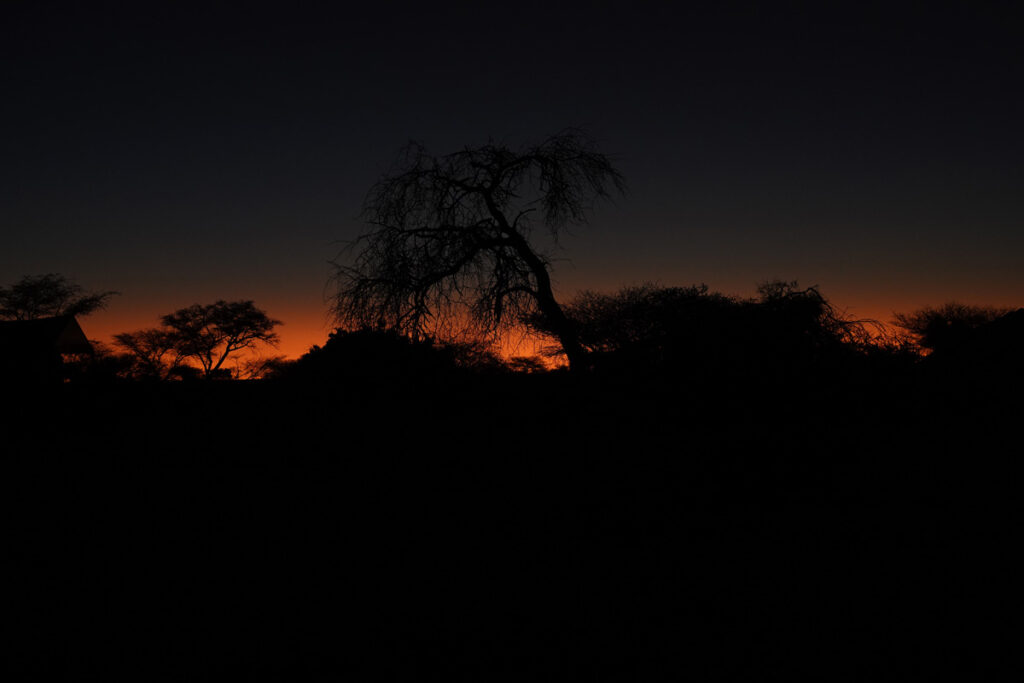
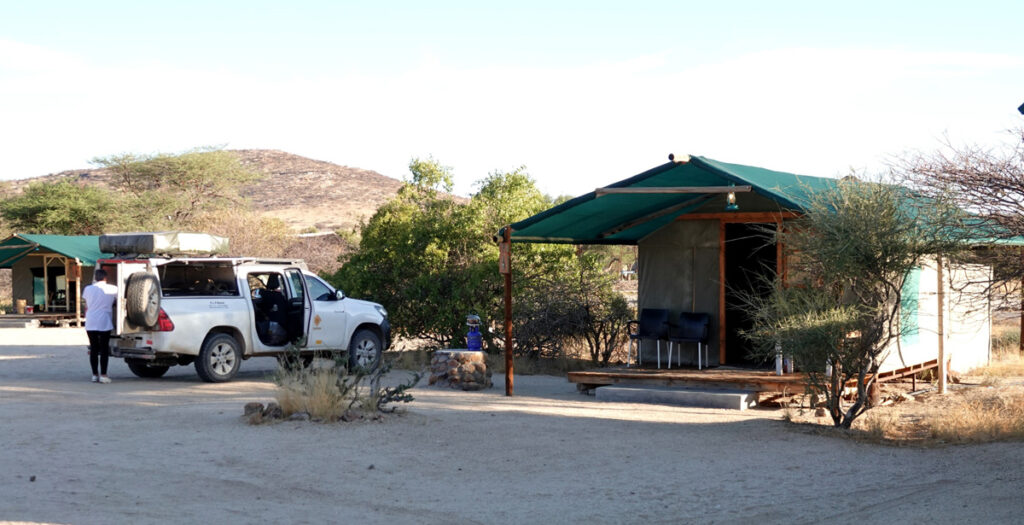
ROAD TRIP IN NORTH_WEST NAMIBIA
Day 1 : Windhoek – Waterberg Wilderness
Day 2 : Hiking
Day 3 : Ugab Terraces
Day 4 : Ugab River Valley
Day 5 : Damaraland and Skeleton Coast
Day 6 : Cape Cross and the Spitzkoppe
Day 7 : Walvis Bay and Sandwich Harbour
Day 8 : Moon Landscape and Welwitschia Drive
Day 9 : The Kuiseb and Solitaire
Day 10 : Back to Windhoek via the Spreetshoogte Pass
